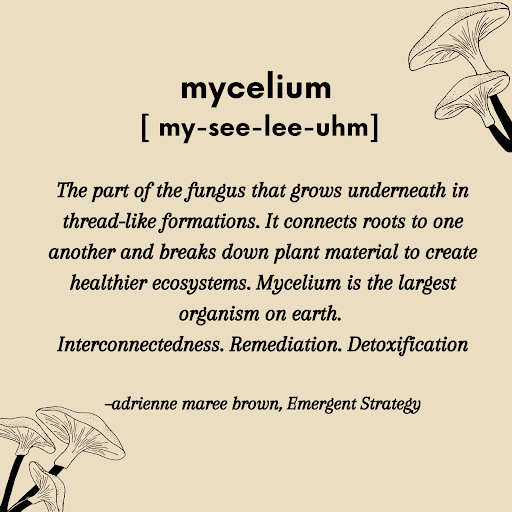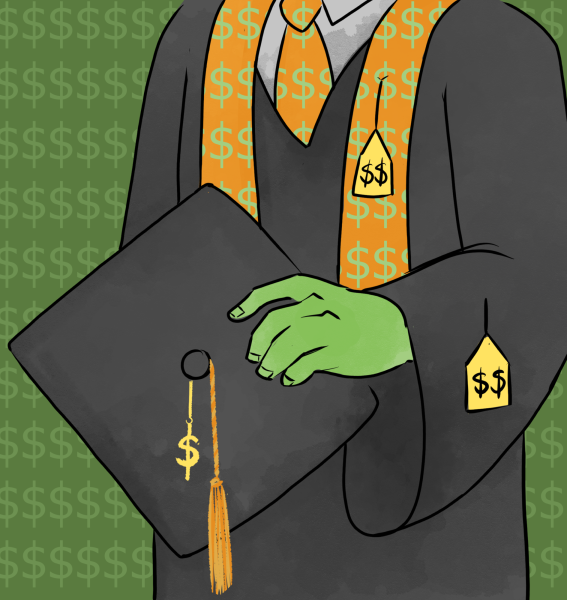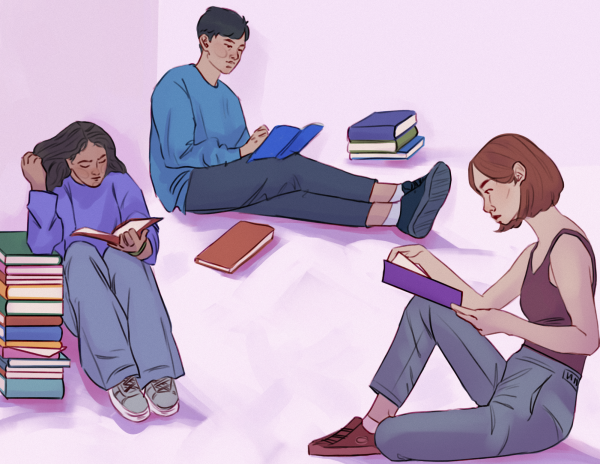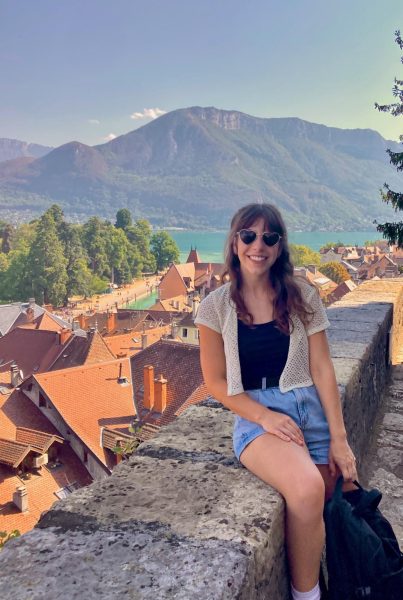Mapping Mycelium: Angel Harris
February 15, 2021
Editor’s Note: All columns published by The Daily Barometer do not represent the opinion of The Baro, rather, columns reflect the personal opinions of the writer.
Mapping Mycelium: Sowing Stories of Resistance
If you’ve ever been to a Juneteenth event or a community action for racial justice in Corvallis, Ore., chances are you’ve seen the lovely Mrs. Angel Harris. With power and strength, Harris is a community leader and advocate for justice and equity in the Mid-Willamette Valley. Her warm embrace shows up when you need it most, her thoughtfulness never escapes her, and her voice plant seedlings of hope in the minds of many as her ideas and vision for justice spread like mycelium.
I can’t pinpoint when or where I first met Harris, but I can always remember her presence and the care that she expressed through her words calling for action and education. She just completed her two-year term as the NAACP Corvallis/Albany Branch president and shared with me in an interview what she has learned from the Corvallis community and her hopes for collective change. Harris is a vital community member of Corvallis as she continues to inspire others and build a better, anti-racist future for the Valley.
When I dream about and imagine change, I think of people, communities and groups who believe that building a better world is possible. In our collective struggle, we all come to this work from our different lived experiences. We must understand that the constant power from systemic oppression and those that uphold it, is intertwined and constrains us in different ways that aim to control and suppress. The people who dare to speak out against this machine and seek change, be change and live change, have my heart.
For Harris, her intentionality in doing movement work and commitment to collective healing and transformation is inherent and shows up in the relationships she’s built. She’s a mother, wife, nurse by profession and has lived in Corvallis for 25 years.
Our sense of place can come from our surroundings and people that we consider family and friends. Harris has made this area home and created a life here for her family. Harris emulates and expresses love in the most genuine form and uses her innate power to make a difference and create space for others here in the valley.
“It’s cool to have roots in a place and to not even had wanted to come here and fallen in love—and literally fallen in love, this is where I met my husband too. It’s been cool to be in an area like this and still be able to thrive and hopefully empower others to feel like they belong here as well, people of color especially,” Harris said.
Corvallis, like all of Oregon, is a predominantly white area whose roots of existence are in anti-Blackness and anti-Indigeneity—carried out through specific policies like the Oregon Donation Land Act of 1850 which entitled white men and their wives to Indigenous land. Oregon—established as a white utopia through Black exclusion laws, exploitation and gentrification—sunk it’s colonial and capitalist roots into the soil we move across today. Black and Brown folks living in Oregon are resilient by nature due to the extreme removal processes of Black, Indigenous and people of color that the state has used through our education, agricultural, healthcare, justice and prison systems.
Harris has lived in the Willamette Valley long enough to see the community ebb and flow through generations of community engagement and activism. During Harris’ time at Oregon State University, she said she was involved with the Lonnie B. Harris Black Cultural Center and the Educational Opportunities Program, and found belonging within her church which continues to be her community today.
“Belonging for me was about feeling a part of a community and I found that in my church, which was huge because when things would happen like the ’96 Boycott, my pastors were there speaking at the boycotts back then which made me feel supported,” Harris said. “I always tell people, you can’t live here if you don’t have people to support you…I know that you can’t do this work by yourself and I know you can do a lot when there’s people around you who can encourage you. And the thing about belonging is that you have to know who you are.”
The OSU culture in the 1990s was tense as there were a number of racist incidents that occured. In 1991 former BCC coordinator, Jeffrey Revels, was nearly hit by a van that racially harassed him. Revels spoke out against this hate crime and OSU implemented various committees and departments aimed at combating prejudice and racism on campus—yet that didn’t stop the hate.
What sparked the 1996 Boycott, were a string of racist actions that occurred within a month of each other. Eric Hutchinson, 21 years old at the time, and another white OSU student were charged with intimidation for spewing racist remarks and trying to urinate and spit on a Black student. Around the same time, posters for an event hosting Anita Hill—an academic who teaches social policy, law and women’s studies at Brandeis University and a Black student running for a student government position had their posters defaced. Not long after, an OSU fraternity dressed up in Ku Klux Klan hoods and robes at a party.
Incidents like these don’t happen abnormally. You think those actions were those students’ first time being racist? No. Do you think it was their last time? No. Racism is learned behavior that is supported and encouraged over time through our relationships with others and through institutional policies that those with power aimlessly follow.
Organizers from the ‘96 boycott demanded three things; 1. A safe and comfortable environment for all Black students, staff and faculty; 2. Overall improvement of climate through increased recruiting and retention of Black students, staff and faculty; 3. Fair treatment for Black students and faculty. Harris reflected on how much has changed since the ‘96 Boycott. Sometimes it feels like there has been great strides towards true liberation, but at the same time, feels far from our grasp—unable to see the possibility of change.
So how do we actually fight for racial equity in Corvallis and Oregon broadly? Harris said, education and conversation is key.
“We need to talk about what is really going on, get deep, and go below the surface and examine where we are today,” Harris said. “We must look at how systemic racism has impacted our society, so that we can work towards creating systems and policies that benefit all of us. I want us to have real courageous conversations. I’m getting free and I’m hoping to build that bridge for us together. I want to look at how we are centering people of color in the work of liberation.”
“ I’m getting free and I’m hoping
to build that bridge for us together. ”
-Angel Harris
Harris and the local NAACP branch not only just assists the Corvallis-Albany community, they also support the cities surrounding them as well. In 2019, when Lebanon High School students wore Blackface to a schools fundraising event, Harris and the NAACP were called in to assist the school district with the racist incident. It’s not just older generations that need to learn, it’s the youth too—in fact it’s all of us. The work of educating those about the history of white supremacy in Oregon and how it affects us today is just one aspect of doing racial equity work. Harris and I joked on the phone because, what really is ‘the work’? Is it just doing what’s needed in the moment?
“Doing justice and equity work is hard work,” Harris said between laughs. “Which is why I had to pray a lot because it’s one thing to talk about the work, but another thing to live the work…One of the versus that leads me in this work is ‘do justice, love mercy and walk humbly with your God’ (Micah 6:8). That is important for me because the first thing I read is, ‘do justice’ and I reflect on what that means because we can think about justice and read about justice, but doing is an action and I want to be one that does justice. When I think of racism I think of what Black people have gone through in this country and we walk in mercy so often. Some white people think we want to retaliate, but we just want to not only live, we want to thrive in this country”.
In order to work towards our future we have to learn from the past. We must be dedicated to cultivating and continuing the process for change. Liberation does take time and we must work towards unlearning the biases that create the prison in our heads and listen to people like Harris who are dedicated to bridging people together and working towards anti-racism every day. She is definitely aiding in planting something truly beautiful here in the valley.
“What I see as true liberation is change in our systems and policies. I want to see real and authentic diversity, equity and inclusion work in our communities. We say all the words, but something’s not happening here [Harris motions to her heart]. At the end of the day, if my heart doesn’t change, all the information I hold in my mind won’t matter,” Harris said.






















































































































